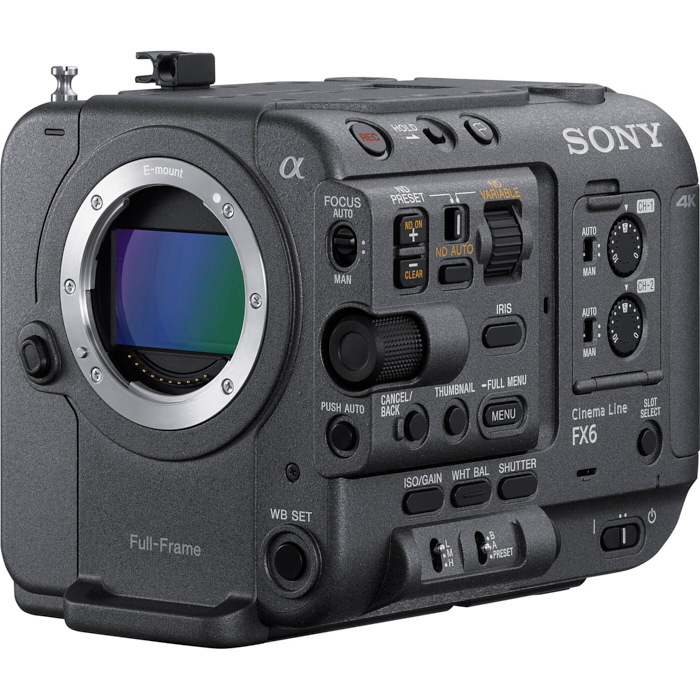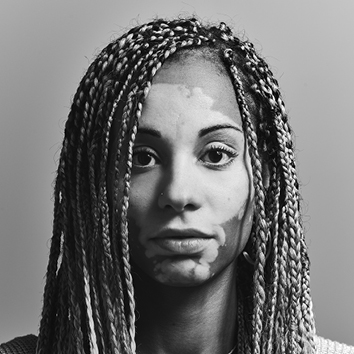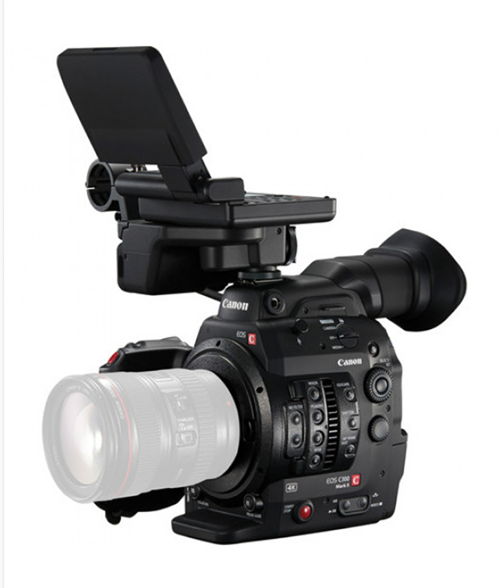With the advent of the “HDSLR”, that is, the first DSLR (Digital Single Lens Reflex) cameras that could record HD video, the line between video capture and still capture became blurred. The large full frame and still relatively large APS-C sized sensors provided what mainstream professional camcorders could not up to that point: dynamic, shallow depth of field control, a small form factor, and improved low light sensitivity in a reasonably priced package. It might not sound like much, but the significance of those qualities cannot be overstated.
While DSLRs and their Mirrorless counterparts continue to excel in still photography, their ability to also record ever more impressive video has essentially caused the dedicated still camera to go the way of the dinosaur aside from some notable medium format exceptions.
Indeed, DSLR and Mirrorless bodies (henceforth shortened to DSLR) record quality video with no sign of developmental stagnation, however, they fall well short of outright replacing dedicated video cameras (henceforth used interchangeably with cinema cameras).
If you’ve ever seen the prices of professional cinema cameras you know that they are expensive. Actually, “expensive” doesn’t even come close to describing the cost to purchase some of these camera systems, with many starting at 5 digits and some even reaching 6 digits to own all said and done. Meanwhile, DSLRs run around $5k on the high end and can record absolutely beautiful footage. If you’re a normal human being you might be asking yourself, what’s the difference? Its a good question, and one with many answers.
Physical Differences
To start, professional cinema cameras or otherwise high end camcorders are physically different from DSLRs. They tend to be larger (with a few notable exceptions) with multiple mounting points for a variety of accessories to facilitate a plethora of configurations. You’ll often see dedicated video cameras with a myriad of accessories strapped on including follow focus, external monitors and recorders, microphones, remote DSLR transmitters, handles, mounting points for rigging, and more. Each of these devices can be placed on the main camera in different configurations to suit any number of shooting situations.
Dedicated video cameras tend to have more input and output ports including HDMI, SDI, XLR for audio, and more. These ports have physical sizes which must be accommodated, as well as additional hardware to make these ports work, thus further contributing to the size of the overall camera body.
Additionally, cinema cameras consume much more power than DSLRs since there is more happening under the hood. To continue shooting for a practical amount of time, the size of the batteries have to be larger. This large battery has to be mounted securely, so the physical mount has to be large as well. Thanks to all this power consumption, cinema camera can generate a lot of heat, and that heat has to be dissipated somehow. This is accomplished by fans that engage when the camera is not recording, and by using heat sinks to whisk heat away from the important internal components. These cooling methods require physical space to exist.
The difference in size also allows for more surface area to place physical buttons for quick changes to important settings. While DSLRs have had their physical buttons boiled down to the most crucial and easiest to access to facilitate hand-holding, the complexity of cinema cameras and the often difficult, fast paced environments in which the perfect shot has to be achieved, additional physical buttons to accomplish quick tasks can help make the difference on set. Lastly, many of these types of cameras are designed to be easily positioned on a shoulder, further changing their form factor.
Image Quality differences
One of the main bragging points DSLRs had over video cameras when they were first released was their large full frame or APS-C sensor. For a while you could almost instantly pick out video that had been shot on a DSLR vs video shot on a dedicated (digital) video camera because the DSLR footage had the option to use the kind of shallow depth of field still photographers are accustomed to. This benefit has since changed, with pro cinema cameras regularly utilizing full frame sensors, with some “large format” cinema cameras boasting larger than full frame sensors.

Without getting too technical, cinema cameras record more data at higher bitrates than DSLRs. These file sizes are enormous since they are less compressed and store more data for manipulation on the back end. This may also include the ability to record RAW data in addition to logarithmic profiles as discussed in our previous post. Recording RAW data requires a lot of processing power. To date, the ability to record RAW footage isn’t available on any DSLR, though the mirrorless Nikon Z6 and Z7 should have this ability with the aid of an external recorder later this year.
Since cinema cameras record so much data they have to have a sufficiently large (and fast) place to put it. Solutions vary, but many camera systems, including those from RED and BlackMagic, record to dedicated SSD drives and snub traditional storage methods altogether. These SSD drives provide fast read/write speeds, large capacities, and durability.
As discussed in a previous blog post, dedicated video cameras require consistent, unchangeable shutter speeds depending on the frame rate of the footage being recorded. That leaves only ISO and aperture to manipulate exposure, however those two settings directly effect image quality (dynamic range in the case of ISO and depth of field in the case of aperture). This is why neutral density filters are so important, nay necessary, in professional video production. These filters reduce the amount of light hitting the sensor allowing for the proper shutter speed to be used in order to produce the most natural motion blur, the appropriate ISO for best dynamic range, and the ability to use aperture to control depth of field rather than exposure. As a result of this reliance on neutral density filters, some video cameras have ND filters built in, reducing the need for larger filters to be placed in the front of the lens.
Speaking of dynamic range, you’ll often see cinema cameras with native ISOs much higher than those of DSLRs. While the native ISO is high, ISO can be brought down to be less sensitive, however this may be at the cost of dynamic range. Simply put, a camera’s native ISO is the sensitivity at which the most dynamic range can be recorded above and below 18% grey. For many cinema cameras, this sensitivity can be 800 or above. Further, some cameras offer dual ISO sensitivity, meaning dynamic range can be dramatically effected in highlight or shadow areas depending on the chosen ISO, as the signal is interpreted differently for each set of ISO values.
Since they were first released, DSLRs relied on what is known as a “rolling shutter” to record video. This term refers to the sensors in these types of cameras and their need to scan down the sensor and effectively record different parts of the scene at (very slightly) different times. This can have a negative effect on image quality when fast movement is introduced like a quick pan. Simply type in “rolling shutter” in the search bar to see some examples. Cinema cameras, on the other hand, will have a “global” shutter, which means that the entire sensor is recording the scene at any given time, thus preventing the effects of rolling shutters.
Recording Options and Resolution
We’re now solidly in the 4k era, and we’re seeing the push for higher and higher video resolution all the time. While DSLR sensors are now routinely in the 50 megapixel range with the ability to record full resolution time lapses which are effectively 8k, their video recording capabilities typically max out at UHD (3840x2160). What’s more, there are significant limitations to those high resolutions which may take the form of lower bit depth and a modest maximum frame rate of ~30fps, effectively rendering slow motion an impossibility at 4k.
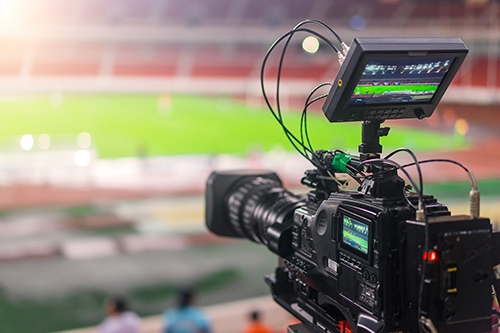
Dedicated cinema cameras, on the other hand, can record at much higher resolutions with greater bit depth and with far more options for frame rate. For example, while the RED Epic-W, 8K Helium Sensor maxes out at 30 fps at 8k. At 4k it can record 120 fps, and at HD it boasts a whopping 300fps. That’s some seriously legit slow motions chops while still being able to record cinematic 24p at a whopping 8k. You can’t find a DSLR that can do that (at least not yet).
Another important feature to consider is HDR video, which very few DSLRs can take advantage of. Much like HDR (high dynamic range) photography, HDR video records multiple images at different exposures between frames. Later this footage is combined for a very gradable image.
Lastly, but most importantly depending on who you ask, is the option of shooting into codecs other than H.264. H.264 is great for playback across a wide variety of media. It is, however, highly compressed which can be problematic in post production if there are a lot of adjustments that need to be made. Shooting into codecs like ProRes or REDCODE for RED cameras, offer less compression and have more versatility on the backend.
The Lenses Are (Super) Different
We can’t talk about the difference between DSLR and cinema cameras without going into the lenses used for each. Its true, the light that hits the sensor is the same whether its coming through a cinema (cine) lens or a traditional photography lens. However, cine lenses have several features which make them stand apart from traditional still lenses.
Focus breathing is the subtle change in focal length that can occur while the focus is changed. Even if you’re on a prime lens, you may see that as you move focus from infinity to the minimum focusing distance the image appears to zoom in. In still photography this hardly matters at all, but in video it can be distracting. Many cinema lenses reduce or completely remove this habit.
Likewise, if you’ve ever seen a nature documentary you can imagine how important it is to be able to smoothly zoom in and out, as well as smoothly track focus. Cinema lenses are specially designed to make these changes as seamlessly as possible for the cleanest footage. On that same note, the aperture blades of cinema cameras are designed to smoothly and slowly move from one aperture to another to similarly create seamless changes in exposure.
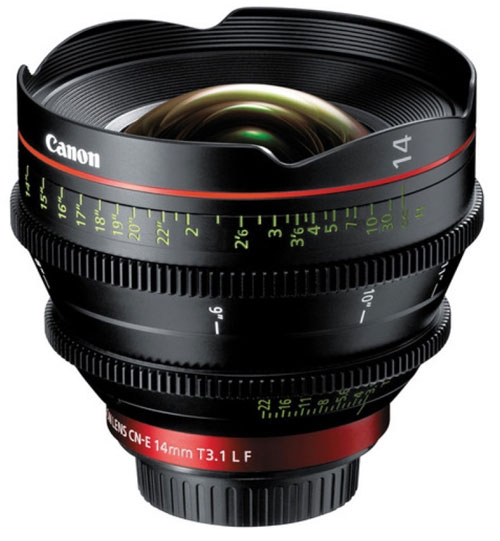
Another habit of zoom lenses which manufacturers go to great lengths to correct for the world of video is the change in focus while zooming. Many still photography lenses will slightly change their plane of focus when zooming in or out. That is, what you’re focused on at 400mm may not be in focus when you zoom out to 100mm. Cinema lens manufacturers create what are known as parfocal lenses which will maintain their focus point throughout their entire zoom range, allowing for smooth zooms while recording which would be almost impossible otherwise.
While we’re talking about lenses we should also probably talk about lens mounts. Almost every DSLR camera manufacturer has their proprietary lens mount (which are capable of shooting video), the world of cinema lenses relies on far fewer mounts which helps with standardization. Arri’s PL mount and Canon’s EF mount are the most common. Some Cinema cameras have interchangeable mounts, allowing the camera body to be used with either family of lenses. Adapters abound, however, so there’s likely some configuration possible to adapt camera A to lens B. Results may vary.
Conclusion
Those, my friends, are SOME of the differences between DSLRs and video cameras. There are many more, but these are some of the largest, most notable differences. When it comes to footage of the absolute highest quality, dedicated video cameras are the way to go every single time. However, that isn’t to say DSLRs should be overlooked. Not every video has to be manipulated in post to the Nth degree. Considering how most videos are consumed (online), many of the features listed above aren’t necessary and would likely be overkill. DSLR film and video making is strong, and its getting stronger all the time. Meany feature films and TV shows have been filmed on DSLR rigs, either fully or in part. Plus, DSLR video production is getting better all the time. As mentioned above, the ability to record RAW video, which has been squarely in the territory of cinema cameras up until now, will soon be available on the Nikon Z6 and Z7 with an external recorder. Sony and Panasonic continue to push the limits of what is possible with their mirrorless cameras. As with all things gear related, it all comes down to the right tool for the job. Hopefully this has helped shed some light on a different set of tools.



